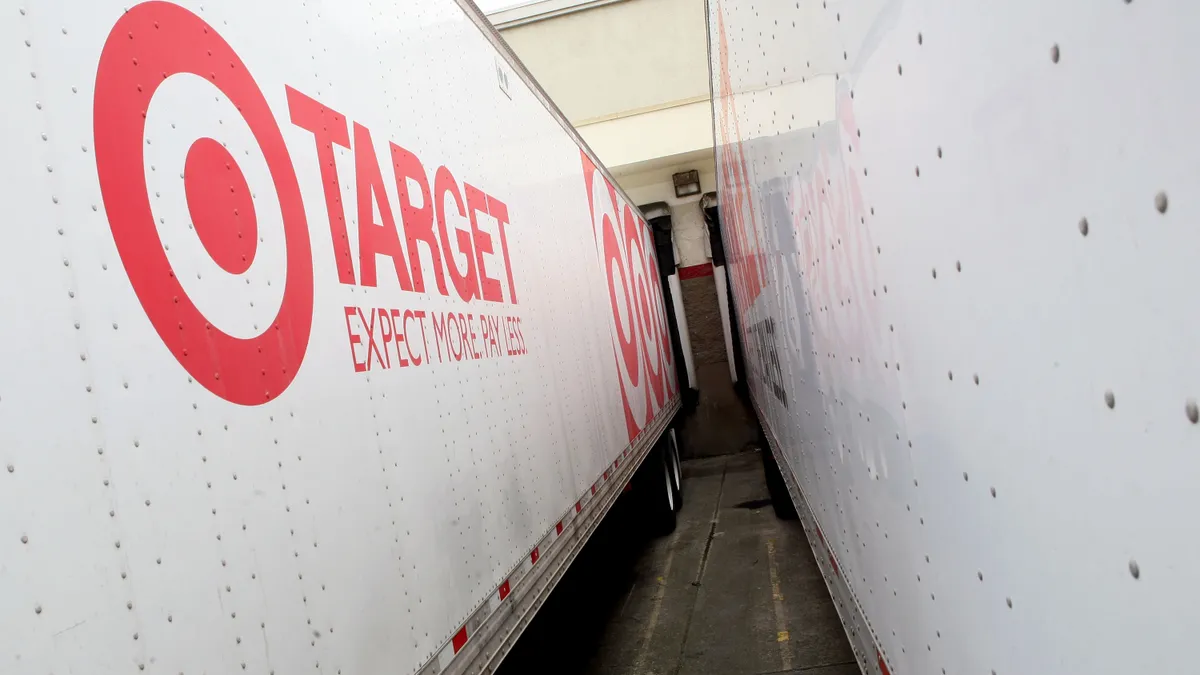Dive Brief:
- Target plans to open four new sortation centers this fall in Houston, Dallas, Philadelphia and Lawrenceville, Georgia, the retailer announced on Thursday.
- Removing the sortation process from the backroom and stores and moving it to a dedicated facility will help free up space and time within retail locations, Target said. The sortation centers will get deliveries from stores and sort them for delivery partners like Shipt.
- Target says the pre-sort process and the technology at the sortation centers will also help to lower processing time for delivery partners.
Dive Insight:
Target has been dedicated to its store-based fulfillment model for years at this point. And experts say the model has paid off during the pandemic.
"Target was among the earliest retailers to understand the power of store assets in the omni-channel world," Michael Baker, senior research analyst at D.A. Davidson, wrote in a research note last year. "[Target] is now well positioned to take advantage of changing consumer preferences."
But the store-based fulfillment model has required picking, packing and sorting to take place all in the backroom of a Target store. The sortation center model will allow the store to focus on just picking and packing, Rebecca Swartz, Target's director of global supply chain and logistics, said in a video.
"Then we're able to have a Target-controlled truck going to multiple different stores, multiple times per day and bring them to the sortation center," Swartz said.
Once in the sortation center, the packages are sorted by the delivery route for the carriers.
Target has been testing this sortation center model in Minneapolis, and the retailer in March announced plans to expand it to other locations. Thursday's news reveals the locations of the four new facilities.
Two of the four new sortation centers will open in October with the others planning to open "after the holidays," Chief Operating Officer John Mulligan said on an earnings call last week.
"These new facilities offer faster delivery times at a lower cost in markets with a high density of shipments," Mulligan said. "In addition, they free up backroom space at store locations they serve, expanding capacity for more digital growth over time."
These digital fulfillment efforts come as Target has seen a big uptick in e-commerce sales during the pandemic. The retalier's percentage of total sales fulfilled by the digital channels was 17% in the most recent quarter, compared to 17.2% during the same quarter last year.
"Obviously, this isn't a trend we expect will continue over time and it's important to note that this year's digital penetration of 17% is well over double the 7.3% we reported in the second quarter of 2019," Chief Financial Officer Michael Fiddelke said last week of the slight downtick in digital's ratio of sales.














